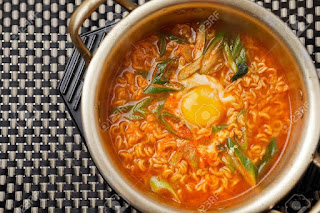Cultural threads: Married women hairdo practice and few other cultural similarities of Korea and India
The practice of married women tying their hair holds a special significance in both Indian and Korean cultures. In Korea, married women often gather their hair into an elegant updo, reflecting a symbol of their marital status and cultural traditions. Similarly, in India, it is customary for married women to adorn their hair with ornate accessories and secure it in a traditional braid or bun.
Why Is It Followed in Both Countries?The tradition of married women tying their hair in both Korea and India is rooted in deep cultural beliefs and symbolism. In both countries, it represents a mark of respect, modesty, and marital status. Tying the hair is seen as a way to protect and preserve the woman's beauty, as well as signify her commitment to her spouse and family. It is considered a visual representation of the married woman's grace, maturity, and devotion.
Apart from the practice of tying their hair, there are several other similarities that can be observed in the customs and traditions surrounding married women in both the countries…
Traditional Attire, Jewellery and Adornments: Both Korean and Indian married women often don traditional clothing to signify their marital status. In Korea, it is a hanbok, while in India, it can be a saree or a salwar kameez. These attire choices symbolize respect, modesty, and adherence to cultural customs. Married women in both countries adorn themselves with beautiful and meaningful jewellery. Korean married women wear traditional accessories like norigae (decorative pendants) and hairpins, enhancing their elegance and marital status. In India, it can include mangal-sutras (customized chains symbolizing marriage), bangles, and toe rings.
Married women play a significant role in various festive celebrations. Korean married women engage in festivities like Seollal (Lunar New Year) and Chuseok (Harvest Festival), where they honor their ancestors and partake in family traditions. Similarly, in India, they actively participate in festivals like Pongal, Onam, and Navratri, which hold great cultural significance. These festivals involve vibrant decorations, traditional dances, and special prayers, where married women express their devotion and celebrate the blessings of married life.
Maternal Responsibilities: In both cultures, married women are traditionally regarded as the primary caregivers and nurturers of their families. They are expected to prioritize the well-being and upbringing of their children, embodying the essence of motherhood.
Importance of Family: Both Korean and Indian cultures have great emphasis on the importance of family and the role of married women in maintaining familial bonds. Married women are seen as the pillars of the family, responsible for nurturing relationships and upholding traditional values.
Symbolism of Red: Both cultures associate the color red with married women. In Korea, red holds symbolic meaning, representing joy, luck, and fertility, and is commonly incorporated into traditional attire. In India, red is considered auspicious and is often worn by married women during religious ceremonies and special occasions.
Through their hairstyles, attire, rituals, and roles, married women symbolize the beauty, strength, and significance of marital commitment within their respective cultures. These similarities showcase the rich cultural heritage and shared values that connect married women in both the countries.






Comments
Post a Comment